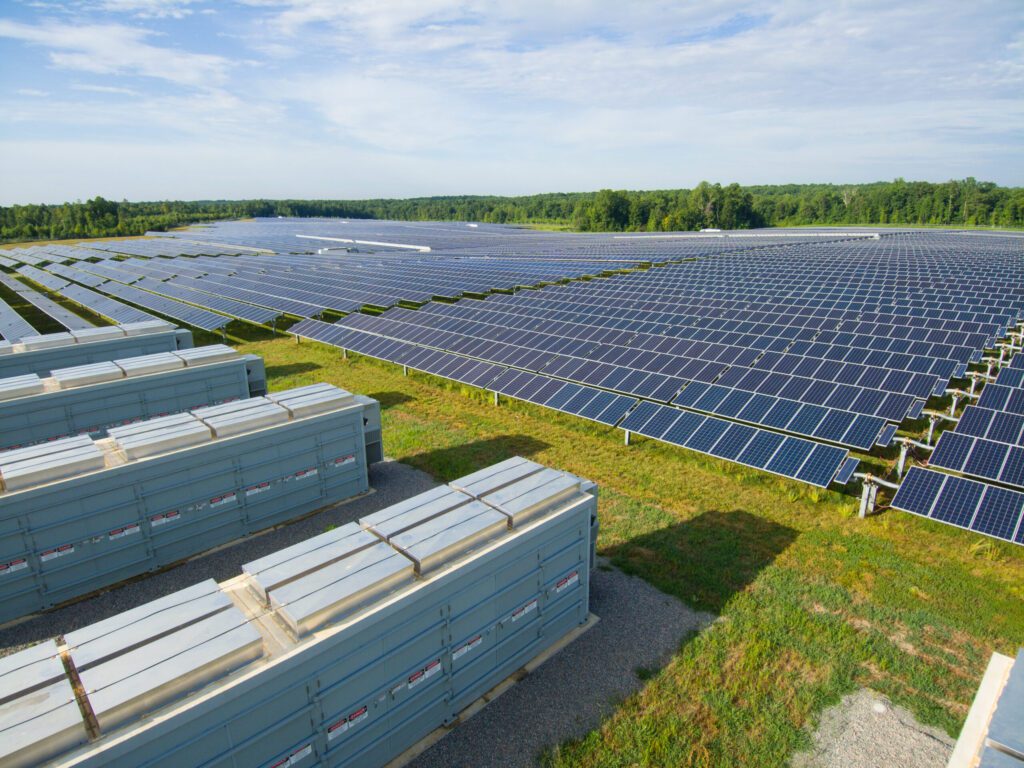The approval for Dominion is seen as a critical next step in supplying electricity to the grid in the coming years, when renewable sources like solar and wind won’t be producing electricity through storage technology that is more capable than the traditional technology more widely used today.
Appalachian Power Company’s request for projects comes as the utility, which primarily serves the Southwest region of the state, continues its work to transition to renewable energy sources as part of the Virginia Clean Economy Act, a 2020 law that aims to decarbonize the electric grid by mid-century.
Dominion’s approval
Toward the end of last year, Dominion filed its application for approval of the three projects, one of which consists of a 5 megawatt iron-air battery and a 4 megawatt zinc-hybrid battery at the utility’s Darbytown Station in Henrico County.
The other two projects consist of a 2 megawatt lithium-ion one at the utility’s training center in Chesterfield County and a 1.5 megawatt nickel-hydrogen one at Virginia State University.
Altogether, the three projects would join 16 megawatts-worth of battery projects already approved under a pilot program, capped at 30 megawatts, to develop energy storage projects granted to Dominion through the 2018 Grid Transformation and Security Act, Virginia’s last major legislative overhaul to the electric grid prior to the VCEA.

Dominion’s Scott Solar pilot battery project in Powhatan. (Courtesy of Dominion)
But what’s different with the Darbytown and VSU projects is that they would dispatch energy for durations up to 100 hours for one and 16 for another in Henrico County, and 10 hours at the school, rather than the usual four-hour duration of lithium-ion batteries.
“Two of the pilots not only involve alternatives to lithium-ion batteries, but some of the new technology that will be tested could offer much longer battery discharge times,” Dominion spokesperson Tim Eberly stated. “That’s very important because we need to be able to store energy from solar and wind for when our customers need it the most.”
Regulators approved the projects after some questions from the Attorney General’s Office of Consumer Counsel, which is charged with advocating for ratepayer protections on behalf of the public.
Assistant Attorney General John Farmer questioned Brandon Martin, Dominion’s manager of business development, during a hearing on the proposals on how the most expensive of the previously approved projects cost $26 million, and the 100-hour Darbytown one is estimated to be $70 million, despite materials for the latest projects being non-rare earth metals and sourced domestically.
“When you look at [a lithium-ion project], you’re roughly 48 megawatt hours of [duration]. It’s a four hour system,” Martin said during the hearing. “This is 510 megawatt hours [of duration]. So drastically different duration of a battery, and that’s where your cost is drastically different.”
Regulators noted the projects would come with an economic impact for the state, the application stated, though specifics were not provided.
The approval also came after regulators reviewed a report from the Department of Environmental Quality to implement environmental protections, such as delineating, or identifying, where wetlands are in relation to the projects.
The projects would come online by 2026 in Henrico County, the third quarter of 2025 in Chesterfield and in 2027 at VSU. Reports on the effectiveness of the pilots would be due by March 31 annually.
Appalachian Power Company seeking applications
Appalachian Power is seeking bids for batteries and several different types of renewable energy technologies. The company has already met an 8% renewable requirement in 2023 and expects to make a 10% requirement in 2024.
The first bid package Appalachian seeks is to develop 800 megawatts of wind and/or solar generation, co-located with stand alone battery sources. The utility wants to acquire projects, through a purchase and sale agreement, that are in Virginia or on an eligible site in West Virginia, in accordance with a recently passed law. Projects must be at least 50 megawatts in size for wind and solar, and 10 megawatts in size for battery storage, and be operational by the end of 2028.
The second bid proposal is seeking up to 300 megawatts of solar and/or wind resources through a power purchase agreement, or PPA, a way to acquire electricity by buying it from a third party developer and then deliver it to customers without directly owning the generation facility.
Environmental and ratepayer advocates have encouraged this business deal because of a lower-cost option it affords customers, rather than a utility building a new source on their own. The projects must be at least 50 megawatts in size for wind and 5 megawatts in size for solar, and also be operational by the end of 2028.
The third set of bids Appalachian Power seeks are for renewable energy certificates, or RECs, that are created when one megawatt hour of electricity is generated and sent to the electric grid from that source. The REC is able to be sold from the generator to the receiver so that the company acquiring it can count it toward its renewable energy goals. Appalachian Power is allowed to acquire RECs for compliance with the VCEA.
“The advertised RFPs play an important role in helping us meet our clean energy commitments,” said Aaron Walker, Appalachian Power president and chief operating officer, in a statement. “These projects will also support local communities by generating jobs and [a] tax base.”
The proposals must be submitted by July 16.
The utility currently owns one five megawatt solar project in Amherst, and has a PPA with five wind farms and three other solar farms, spokesperson Teresa Hall stated. Appalachian Power has a PPA contract with 10 other solar projects that are not yet in service.
Two wind projects approved by the SCC but also not yet in service will be owned by Appalachian power, as well as a battery-energy storage project still needing approval from regulators.
“We are making steady progress with our projects,” Hall said.